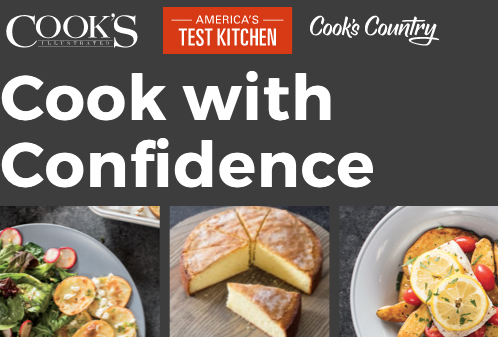Does America’s Test Kitchen content hold up against Millennial tastes?
Since its inception in 2001, the folks at America’s Test Kitchen have prided themselves on being an every-man’s cooking resource. From public access television to print publications, the platform avoids the competitive antics or exotic travels similar networks rely on to draw in audiences. Instead, America’s Test Kitchen content is budget conscious, nutritionally balanced, and family friendly. Rather than going over-the-top, the dishes their chefs present could be incorporated into just about any family’s regular menu rotation, holding its own against grandma’s meatloaf. But, as viewers steadily trade in television sets for computer monitors, will ATK continue to have a spot in the contemporary kitchen?
ATK may seem like a well-oiled machine when the cameras are rolling. Despite being recognized as a voice of authority with a loyal fanbase, it’s no secret that younger audiences have become increasingly reliant on online sources. In order for the brand to survive, cookbooks and television tutorials may no longer be enough. In and outside of the kitchen, it’s become imperative to expand into less familiar territory. But just how well does the all-American name hold up under increasing pressure to change?
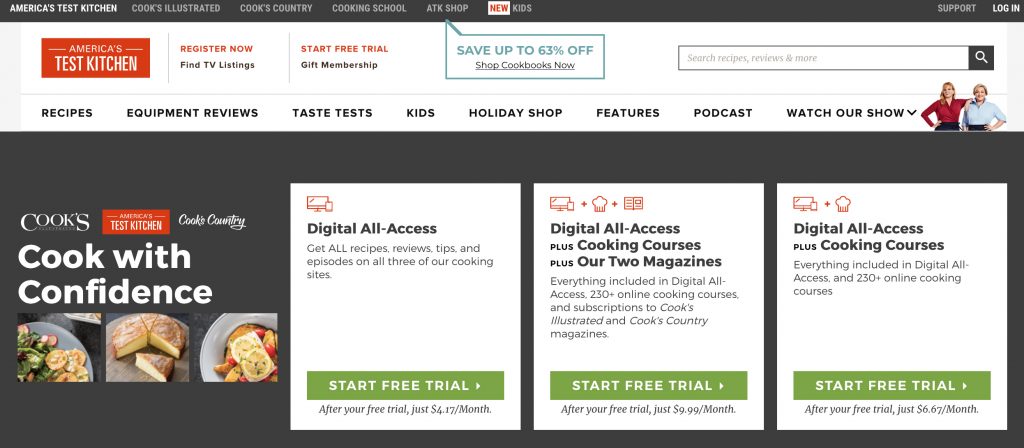
Visuals
I’ll admit it – when I initially logged onto ATK, I was a bit overwhelming. Banners encouraged me to sign up for free trials and check out the company’s subsidiaries. Every bit of free space seemed to be contain some sort of review or recipe. With so many directions to explore, it’s hard to figure out where to start. However, once you do make a decision and wander down a path, the design becomes a bit easier to follow. Like most online food platforms, America’s Test Kitchen content heavily relies on photographs and video content to sell their brand. In fact, they’ve cleverly adopted a Pinterest-esque design for much of their website. Scrolling through, images dominate over small descriptive titles, no doubt to hook hungry browsers.
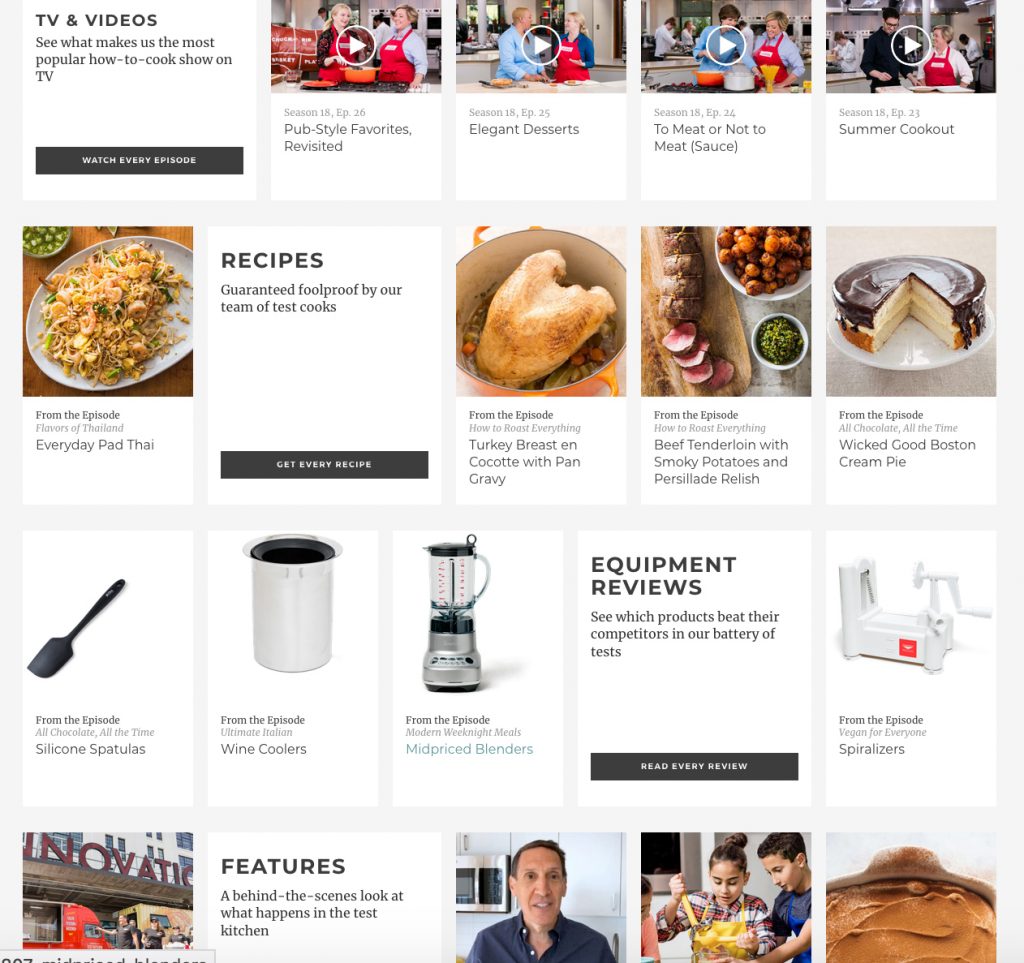
Food and product photography
Everything featured is clean and easily identifiable. In fact, their food photography and equipment product shots have virtually no frills to them whatsoever. This stylistic choice isn’t exactly surprising. Historically, ATK avoids the outlandish and experimental so as not ostracize no-nonsense home cooks that value sensibility over creativity.


Adopting such a conservative style is a double edged sword. Technically, their images are well executed. However, they don’t exactly demand attention. That’s all fine and dandy in the confines of the ATK website. But, when mixed in with blaring headlines and bright colors of Facebook and Instagram feeds, the photographs are easily forgettable.

In short, every image out of the kitchen is as matter-of-fact as possible. They show exactly how a recipe will come out or how a product will look on a shelf – no more, no less. The style itself fits in with ATK’s overarching brand, devoid of favoritism and bias. However, their presentation as a whole could use some TLC if they want to be able to keep up with flashier competition.
Our score:
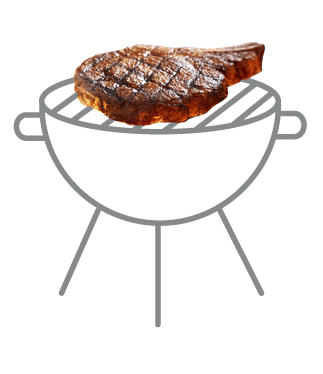


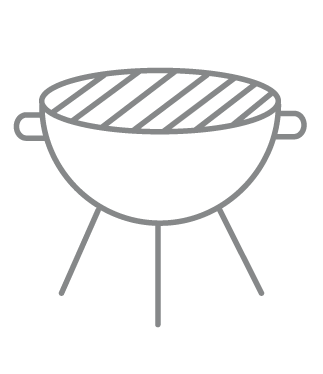

Content
What ATK lacks in pizazz, it makes up for in excellent up-to-date insight. Refusing to go stale with the passing of time, the content itself – aesthetics aside – differs from what other online food platforms have to offer. Notably, the writing staff does an impeccable job of making recipes something more than a list of ingredients. Each dish contains a paragraph or two explaining why it works well. In other words, the site goes the extra mile to ensure that browsers are actively learning rather than passively following instructions. As if that weren’t enough, included with each recipe is a clip directly from the TV show illustrating exactly how to accomplish each step.
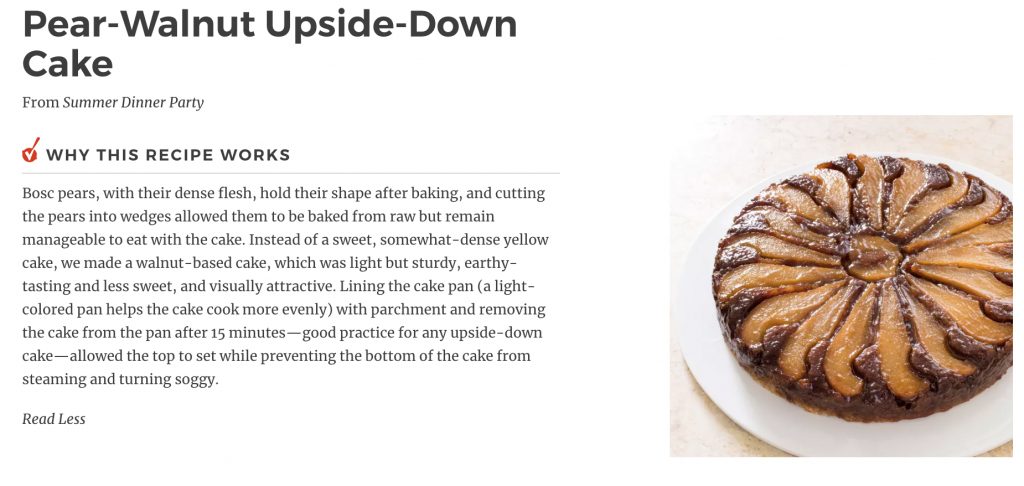
Culinary equipment and ingredient reviews
What makes America’s Test Kitchen content really stand out among the crowd is its extensive database of expert reviews. Essentially, it has become a Consumer’s Digest for just about anything you could ever want for your kitchen. The copywriting doesn’t feel as though it’s aiming to sell you something for the sake of making a sale. Instead, the site’s writers thoughtfully compare and contrast everything from coconut milk brands to immersion blenders, detailing pros and cons alike in excruciating detail. Their careful ruminations aid in helping home cooks choose the products that best suit their needs.
There is one major drawback to ATK’s available content, and it all boils down to money. Without a paid subscription, visitors are restricted access throughout the site. More frustratingly, there doesn’t seem to be much rhyme or reason as to what is or is not accessible without a paid membership. But, at the end of the day, the folks at ATK need to keep their operation running somehow. I feel that I can’t let this mildly annoying marketing overshadow the rest of the fantastic work this platform puts out.
Our score:





Social Media
After spending years focusing on television, the switch to social media has been an arduous one for ATK. Considering their high historical viewership, they have surprisingly few followers to show for it.
Unfortunately, the shortcomings in their visuals are most evident through their social media presence. As I mentioned earlier, it’s easy to see how their plain posts could easily be buried beneath flashier competitors. What’s more, the content posted across their platforms is identical. This comes off as a bit redundant to loyal followers – if you’ve already seen their snickerdoodle recipe on one app, do you really need to see it again on another? While their Facebook and Instagram feeds update about 3 or 4 times per day, the repetitive nature and mild-mannered visuals have done little to attract a new generation of home cooks.
In some ways, their social media presence falls in line with the Kitchen’s brand. ATK had never used flashy techniques to attract audiences, and in that sense their social media style deviates very little from the brand they established decades ago. Furthermore, the content being featured is consistently informative and well researched. All in all, this is enough to carry them along for the time being. But, as media begins to migrate off the air and online, ATK will likely have to step up their game if they want to remain relevant to the average American.
Our score:










Final Thoughts
Ultimately, America’s Test Kitchen’s content and online food platforms function well enough to maintain the brand’s good reputation. There are some real bright spots that make it a valuable resource for beginner and advanced chefs alike. However, despite having years of experience under their belts, there’s still room for improvement.
While the content of their articles, recipes, and reviews is great, their imagery is just acceptable. Some may say that their straightforwardness is a stylistic choice to keep the attention of the average, less adventurous home cook. But no matter how you slice it, cooking is a way for people to be creative. Exciting photographs are a means of getting people excited about food. A cliché featured in many of the cooking shows ATK is quick to write off is that people “eat with their eyes”. Evidently, the folks at the Kitchen never took that message truly to heart.
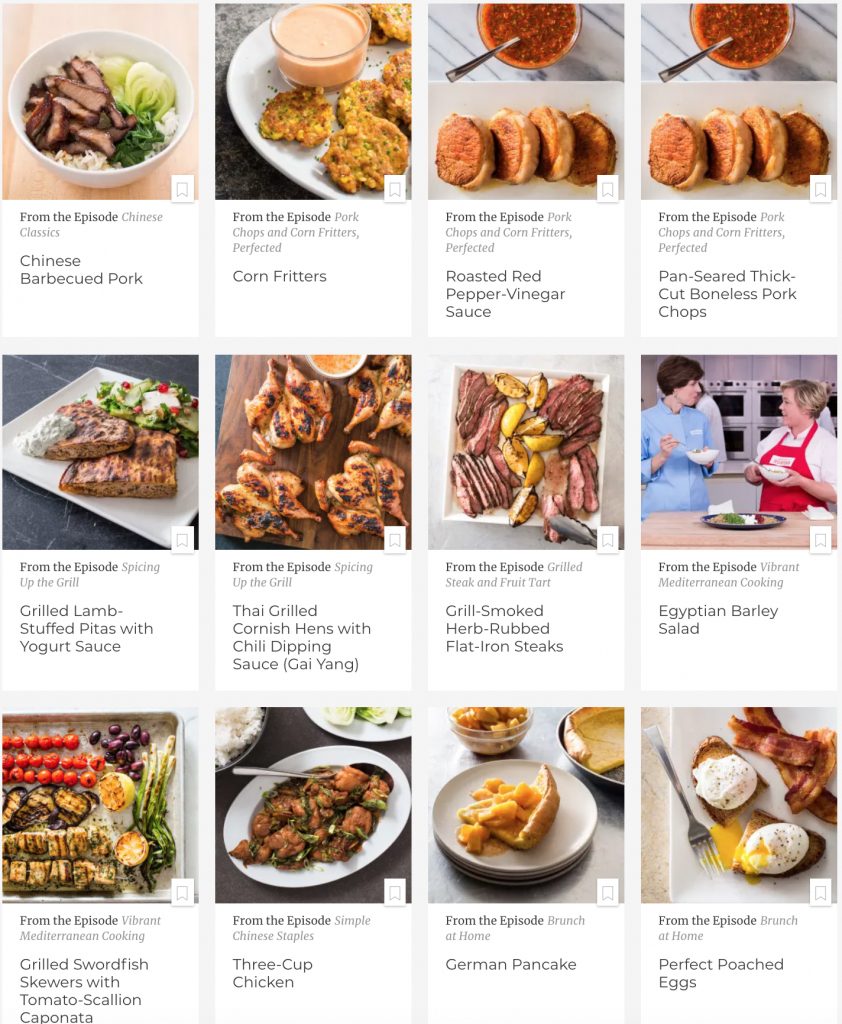
What’s more, ATK’s quiet social media presence falls flat. You could chalk that up to the brand simply putting more of their efforts into their television programing or print publications. But there’s something ironic to that sentiment. ATK has devoted itself to reaching a wide audience through public broadcasting. However, they would no doubt reach even more aspiring chefs if they spent more time promoting themselves online.
While the Americas Test Kitchen’s online food platform is certainly passable, there’s no denying that the experience as a whole has been curated primarily for the people that have been tuning in for years. Sure, they continue to churn out great tips, advice, and guides. All the same, they may be in for a tough time if they fail to accommodate to the new generation of the all-American home cook.
Our score:














